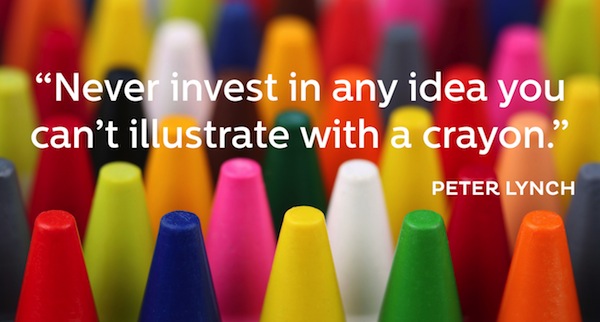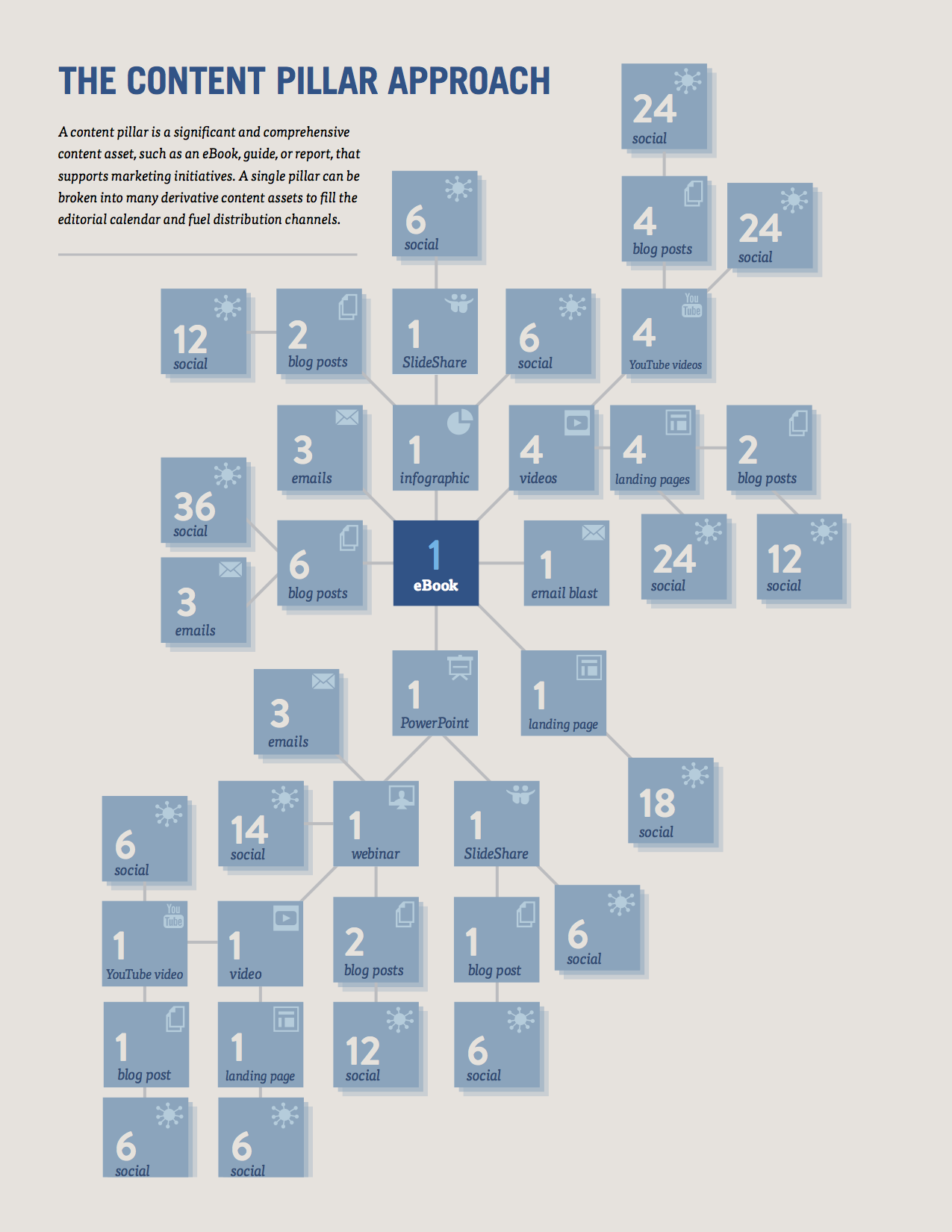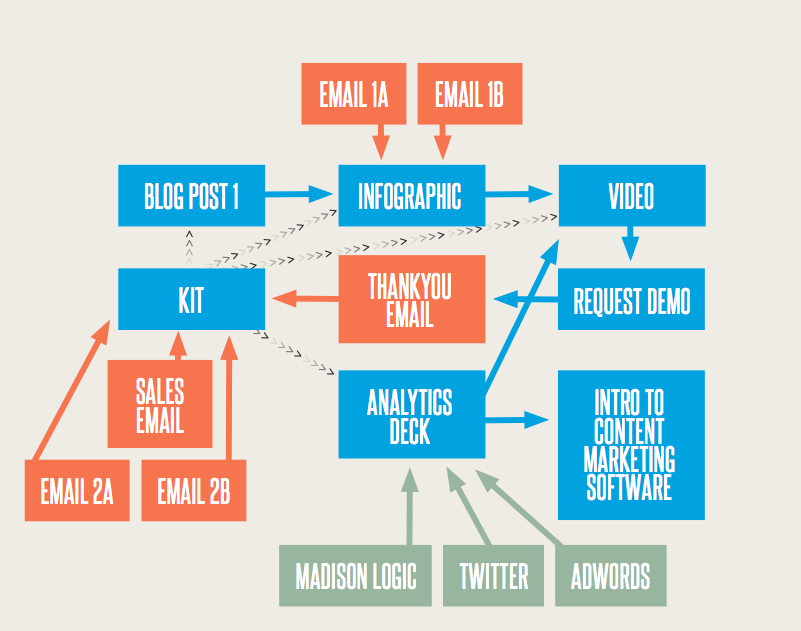
For attracting a target audience and engaging your buyers, visual content is huge. But there’s another audience you need to think about when you’re creating a content marketing plan: Your internal stakeholders.
Content marketing is a team effort. That’s undeniable. It requires buy-in from executives, collaboration across units, and an understanding of responsibilities.
2 Visuals That Explain Kapost’s Content Marketing Strategy
The reasons that visual content is powerful to your external audience—we process visuals faster than text and they elicit stronger engagement—are the same reasons they’ll help you internally. Illustrating your organization’s strategies leads to a clearer picture—literally—of flow and process. It simplifies complex ideas, so you and your team can fully understand them.
To give you an idea of how this works, here are two visuals that get to the heart of Kapost’s content marketing strategy. We use these internally, and so do our customers.
The Content Pillar Approach
At Kapost, we use the content pillar approach to fill out our editorial calendar and fuel all of our content distribution channels. What is a content pillar, exactly? Here’s an explanation from our eBook, The Blueprint of a Modern Marketing Campaign:
“A content pillar is a substantive and informative work on a specific topic or theme that can be broken into many derivative pieces of content to cover multiple channels. A content pillar can be an eBook, report, guide, long video, or any significant (meaning large and thorough) content asset…It’s easy to break that finished asset into blog posts, infographics, videos, emails, social media updates, and other formats to attract different kinds of customer segments and communities across channels.”
Written out, it’s a little hard to wrap your head around. But when presented visually, the strategy becomes much easier to understand.
We use this image internally to plan out our own content pillar campaigns, and our customers also use it to explain the concept of content marketing to their internal team members.
The Campaign Flowchart
The content pillar approach helps us understand exactly how many assets we need to create as part of our campaign. But to get a full picture of how our readers are interacting with this content across all distribution channels—owned and paid—we create a campaign flowchart.
The campaign flowchart reveals how a reader ideally moves from channel promotion to content asset to conversion. In modern marketing campaigns, there are a lot of moving pieces to keep track of, not to mention the various people or teams responsible for those pieces. At Kapost, we create a flowchart for every campaign launch to keep inbound and outbound efforts aligned.
Confused? Take a look at what a finished flowchart might look like. Each solid arrow represents the movement of a buyer if they follow the call to action, and each broken line indicates an asset contained within another asset (for example, a video embedded in a blog post, or a blog post contained in a kit).
By sharing this flowchart across the marketing team, everyone understands exactly how a campaign launch will go, what assets live where, and how they’re being promoted.
Just like your external audience, your coworkers are busy. Helping them grasp your strategy or idea in a clear, simple way will help them understand quickly and, therefore, invest.
So before you plan your next campaign, grab a crayon and start drawing.


